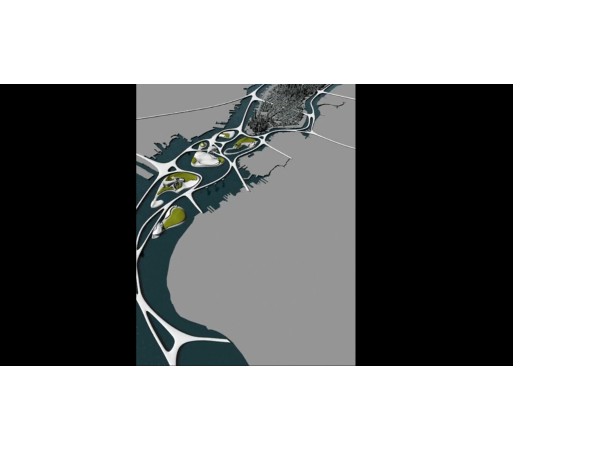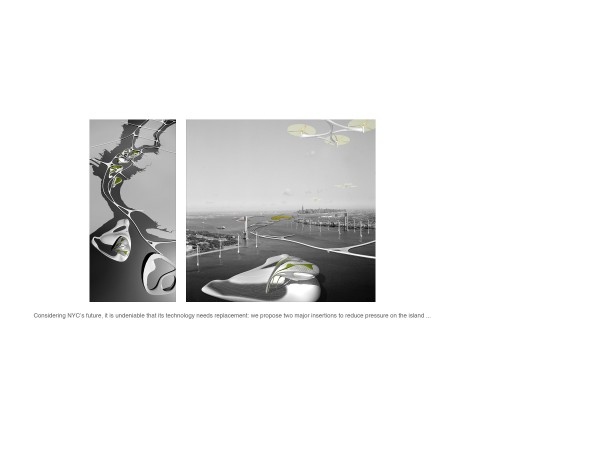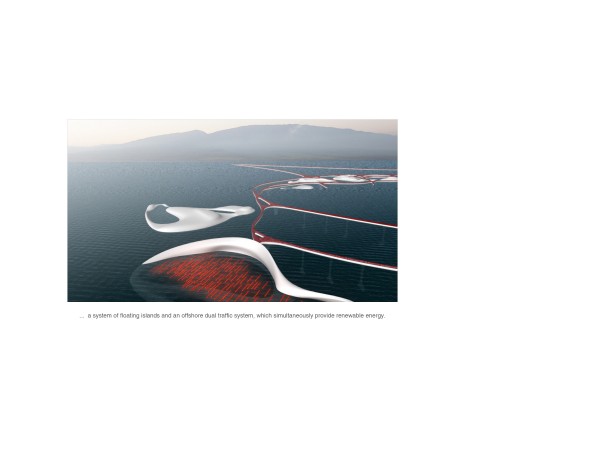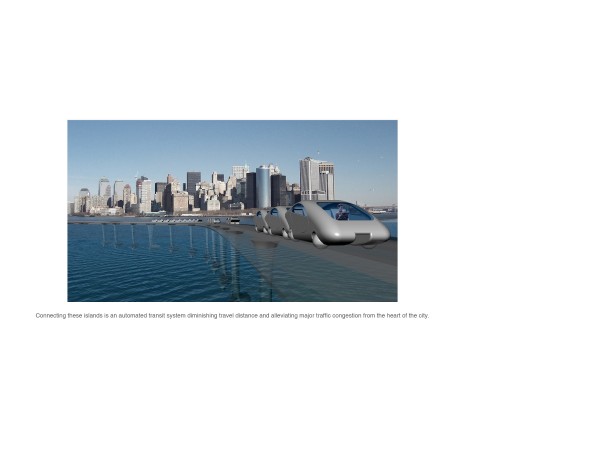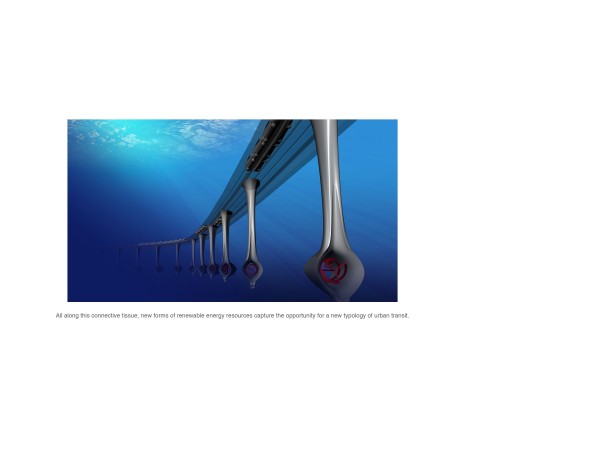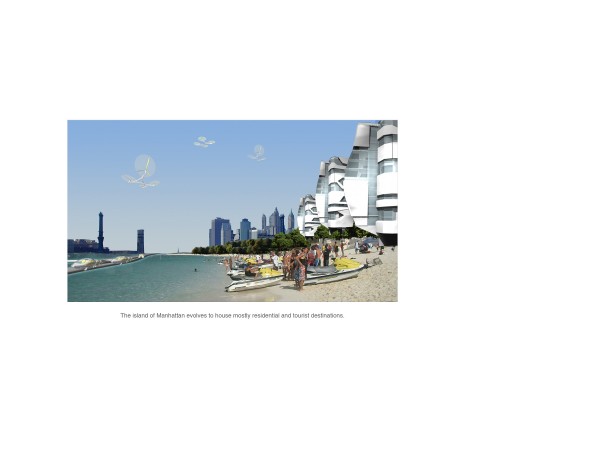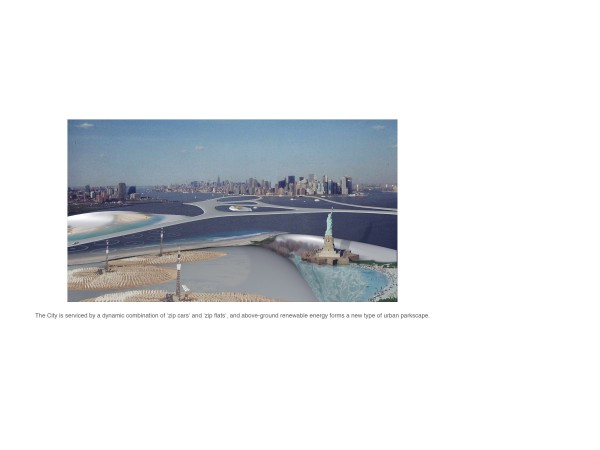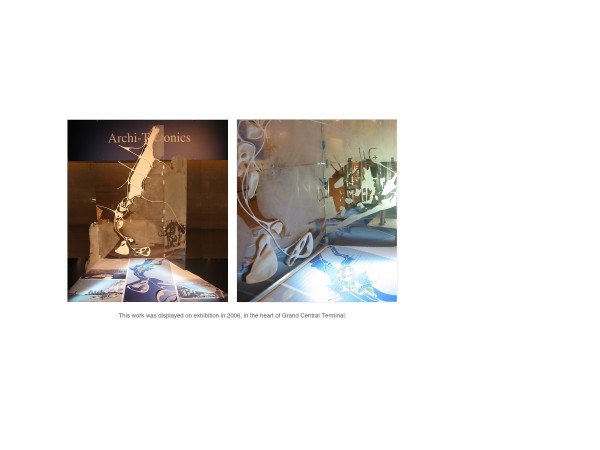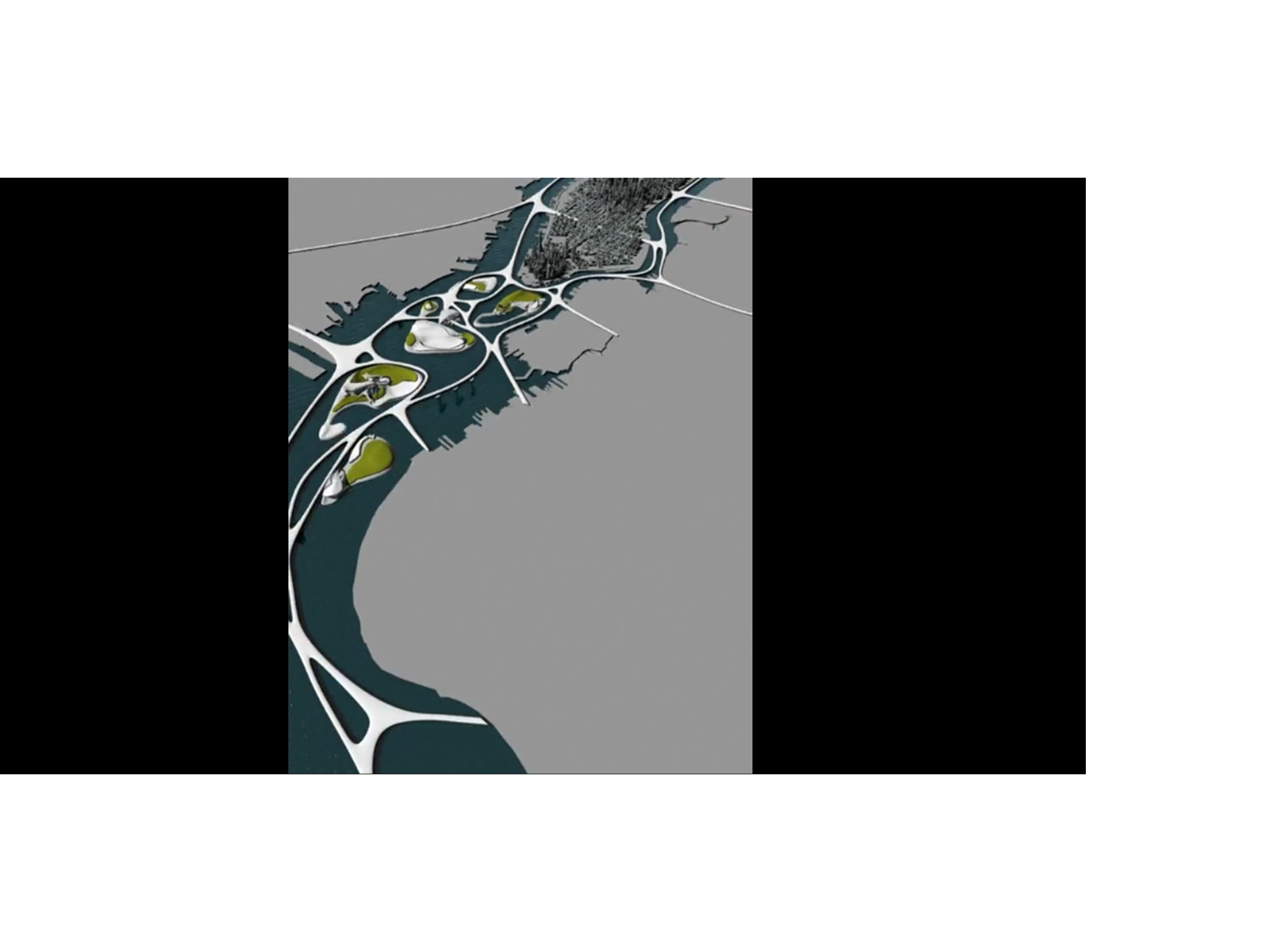
Considering the future of New York, it is undeniable that its ancient technology needs thorough replacement, and not fixing. In this proposal, we envision the future of New York City as transformed in four fundamental ways:
A network of artificial floating islands will fill the upper Hudson Bay, stitching together the five boroughs with New Jersey, and creating a distinct landscape for the New York of 2106. As semi-international zones, the islands provide for an open economy, tax-free shopping, and a new international personal travel hub.
These new islands constitute a distributed landscape of urban productivity, providing for renewable energy resources while simultaneously capturing opportunities for a new typology of urban recreation.
Connecting these islands is an automated intraurban transit system which will activate the river surface and diminish coast to coast distance, thus alleviating major traffic congestion from the heart of the city, and from poorly maintained highways and bridges. At the mouth of the harbor a new international transport hub provides vital connections for high speed global travel.

